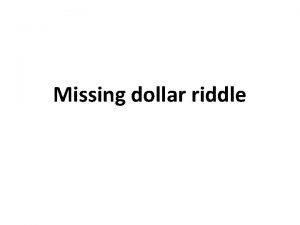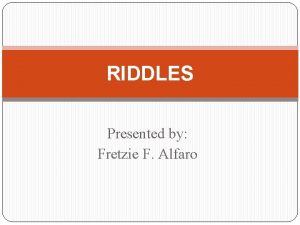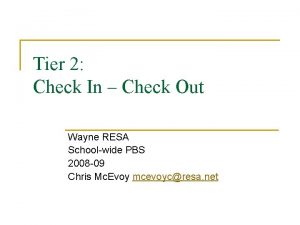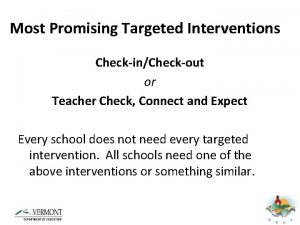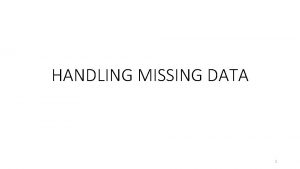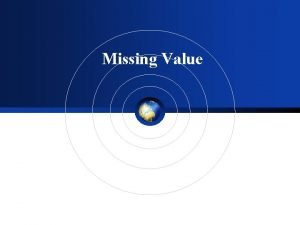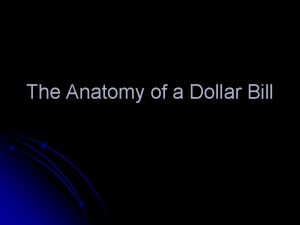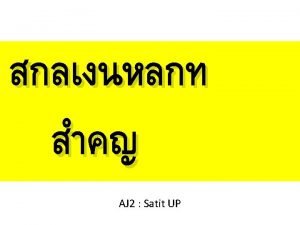Missing dollar riddle The riddle Three guests check







- Slides: 7

Missing dollar riddle

The riddle Three guests check into a hotel room. The clerk says the bill is $30, so each guest pays $10. Later the clerk realizes the bill should only be $25. To rectify this, he gives the bellhop $5 to return to the guests. On the way to the room, the bellhop realizes that he cannot divide the money equally. As the guests didn't know the total of the revised bill, the bellhop decides to just give each guest $1 and keep $2 as a tip for himself. Each guest got $1 back: so now each guest only paid $9; bringing the total paid to $27. The bellhop has $2. And $27 + $2 = $29 so, if the guests originally handed over $30, what happened to the remaining $1?

Solution The key to understanding the riddle intuitively is to realize that, while each man did pay $9, he did not pay $9 to the hotel. Each one paid $8. 33 to the hotel ($8. 33 × 3 = $25), and $0. 66 to the bellhop ($0. 66 × 3 = $2), for a total of $27 spent by the group. $25 + $2 = $27, and so does $9 × 3.

Solution (continued) The initial payment of $30 is accounted for as the clerk takes $25, the bellhop takes $2, and the guests get a $3 refund. It adds up. After the refund has been applied, we only have to account for a payment of $27. Again, the clerk keeps $25 and the bellhop gets $2. This also adds up.

Solution (continued) There is no reason to add the $2 and $27 – the $2 is contained within the $27 already. Thus the addition is meaningless (mixing cost and cash). Instead the $2 should be subtracted from the $27 to get the revised bill of $25.

Solution (continued) This becomes clear when the initial and net payments are written as simple equations. The first equation shows what happened to the initial payment of $30: $30 (initial payment) = $25 (to clerk) + $2 (to bellhop) + $3 (refund) The second equation shows the net payment after the refund is applied (subtracted from both sides): $27 (net payment) = $25 (to clerk) + $2 (to bellhop) Both equations make sense, with equal totals on either side of the equal sign. The correct way to get the bellhop's $2 and the guests $27 on the same side of the equal sign ("The bellhop has $2, and the guests paid $27, how does that add up? ") is to subtract, not add: $27 (final payment) - $2 (to bellhop) = $25 (to clerk) This question is very simple when thought of in a different manner. The hotel receives $30 from the guests and gives $5 to the bellhop to return to the guests. $30 minus $5 equals $25. $3 is given to the guests and the bellhop keeps $2. Thus, $3 plus $2 equals $5, and the remaining $25 is in the possession of the hotel.

Solution (continued) This is clearly not a paradox, and involves only the switching of subtraction for addition. Each patron has paid $9 for a total of $27. The storyteller adds the $2 that the bellhop pilfered, but he should have subtracted the $2 to make a total of $25 paid. So 3 × $9 = $27, which accounts for the $25 room and the $2 given to the bellhop.
